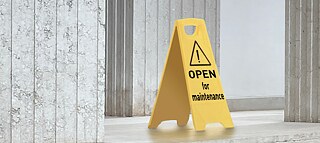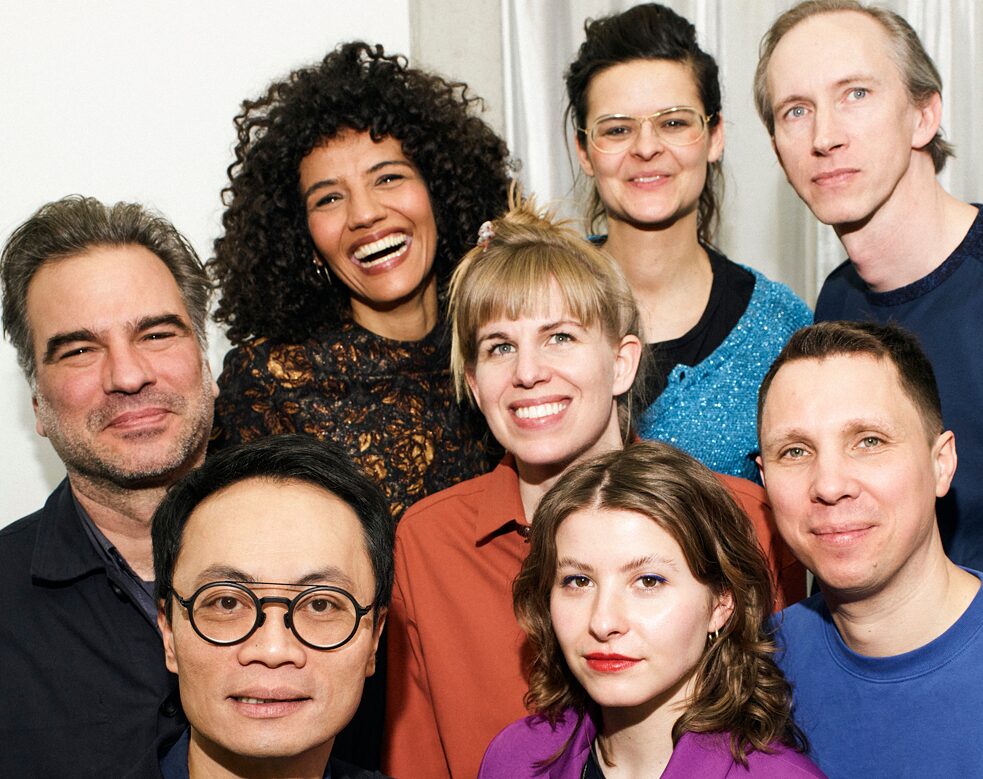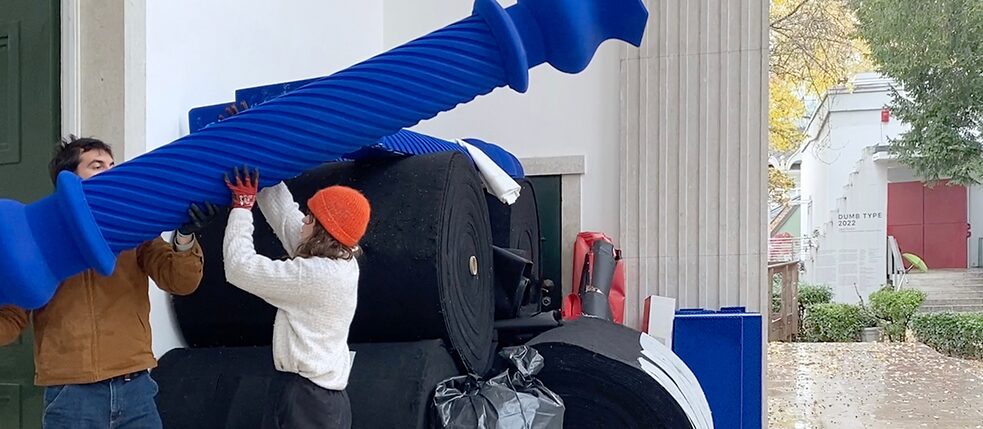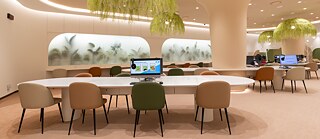Venice Architecture Biennale Working With What’s There

What’s left after a Biennale? For instance the construction material for the German Pavilion at the 18th International Architecture Exhibition of the Biennale di Venezia: for 2023 the plan was to build this structure entirely of material left over from the last Biennale. The pavilion was being curated by architecture magazine “Arch+” and architects’ offices Summacumfemmer and Büro Juliane Greb. Anh-Linh Ngo, editor-in-chief of “Arch+”, explained what’s important to him and his team in this interview with Romy König.
Anh-Linh Ngo, you’re curating the German Pavilion at the Architecture Biennale in Venice this year along with a large team. What initial considerations did you have when you first approached the project?At the start of our work we asked ourselves: what’s actually left after major events like the Art or Architecture Biennale? What remains when the pavilions are closed, the installations are dismantled, and the visitors and artists have gone away again?
A fundamental question that must torment every curator …
But we asked it very specifically, with regard to tangible things. Put another way: what was left in material terms in cities like Venice once such events have ended? And we found the answer: tonnes of rubbish. That got us thinking. And even if we disregard the material aspect and look at urban developments, although exhibitions like the Biennale have some positive impact on the city and surrounding area, there are also plenty of negative effects: they push up prices, spaces become commercialised and property more expensive. The local people are left on their own with the consequences of our actions. That’s why we said: we want to create only things that have a value – things that last, are useful and meaningful to the local people.
 The Curatorial team of the German Pavilion (from left to right, top to bottom): Christian Hiller, Melissa Makele, Anne Femmer, Petter Krag, Juliane Greb, Anh-Linh Ngo, Franziska Gödicke, Florian Summa
| Photo (detail): © Jelka von Langen/ARCH+ SUMMACUMFEMMER BÜRO JULIANE GREB
How did you incorporate these initial considerations into your work on the pavilion?
The Curatorial team of the German Pavilion (from left to right, top to bottom): Christian Hiller, Melissa Makele, Anne Femmer, Petter Krag, Juliane Greb, Anh-Linh Ngo, Franziska Gödicke, Florian Summa
| Photo (detail): © Jelka von Langen/ARCH+ SUMMACUMFEMMER BÜRO JULIANE GREB
How did you incorporate these initial considerations into your work on the pavilion?The theme of our concept is “Open for Maintenance”. This opens up a different perspective on the sustainability debate: firstly we need to move away from the practice of tearing things down and rebuilding all the time in architecture – this point is now being discussed widely. But we also associate it with a social debate: if we look at building conservation, then we also have to discuss all the works over which architecture is otherwise prioritised. By this I mean maintenance, repairs and cleaning of the buildings. After all, these things contribute just as much to space production, even if the activities are often invisible. That’s why we have also partnered with the Goethe-Institut Performing Architecture programme to put on a spoken performance in cooperation with the Institute of Radical Imagination, featuring people who work in the culture and service sector. Highlighting these aspects of care work is a core element of our contribution.
What role is played by the aforementioned legacies of previous Biennales?
This is the second aspect of our work, which addresses ways we can deal with this estate: as far as resources are concerned, in future we cannot simply assume that we will always have everything available to us. We should limit ourselves to a certain extent and work with what’s already there, maybe even resources that have already been processed, into which a very large amount of energy and effort has already been channelled. That’s why we said we wouldn’t import any new materials into Venice for our pavilion.
How will that work?
By the fact that we use what we find on site, the waste material from last year’s Art Biennale. Once we were certain of getting the award for this year, we contacted over 50 pavilions and exhibitions from last year and were ultimately donated material from around 40 of them. Our team collected it together in the weeks after the end of the Art Biennale, laboriously brought it along the canals or over Venice’s many bridges to the German Pavilion and put it into storage there. It’s not enough to pay lip service to the concept of sustainability – it’s hard physical work that takes a great deal of time.
 Storage of collected spolia from the Biennale Arte 2022 in the German Pavilion. Photo (detail): © ARCH+ SUMMACUMFEMMER BÜRO JULIANE GREB
| Photo (detail): © ARCH+ SUMMACUMFEMMER BÜRO JULIANE GREB
And now you’re going to work with this rubbish?
Storage of collected spolia from the Biennale Arte 2022 in the German Pavilion. Photo (detail): © ARCH+ SUMMACUMFEMMER BÜRO JULIANE GREB
| Photo (detail): © ARCH+ SUMMACUMFEMMER BÜRO JULIANE GREB
And now you’re going to work with this rubbish?I’d like to distance myself from the idea of “rubbish” in this context. On the contrary: we want to make clear with our pavilion that these materials are not just waste, they are in fact spoils – to employ a term from art history. All these materials are of course constituents of cultural production, they were part of art installations, exhibition architecture, and this value is something we wish to communicate. We believe that the question of how to deal creatively with what is commonly written off as waste is an important element of the debate about architecture of the future.
Let’s get back to the rising property prices in the tourist city of Venice. How do you keep a handle on that?
First of all we don’t want to come across as know-it-alls. It’s not as if we’re off to Venice bringing ready-to-roll solutions for sustainability, ideally even with best practices that are “made in Germany”. No, the problems are of a global nature – and some of the solutions already exist in local communities. We’re working with what’s already there in Venice in that respect as well: we’ve built up a network of local non-profit initiatives, which deal with issues relating to social and environmental sustainability.
What sort of initiatives are they?
They include for instance Assemblea Sociale per la Casa, which deals with the right to the city and the housing issue in Venice. The population in Venice is continually falling and has now dropped below 50,000. And why is that? Because the majority of people are relocating to the mainland. They can no longer afford their own hometown, touristified as it is. But at the same time hundreds of state-owned apartments in Venice stand empty, justified by the fact that there’s no money to renovate them. This is where Assemblea comes in, for instance with a “squatting and renovation” strategy for empty, deteriorating housing. It’s similar to the practice of squatting and renovating in Berlin-Kreuzberg during the eighties. We aim to lend strength to these solutions by giving them an international status at the Biennale.
The problems are of a global nature – and some of the solutions already exist in local communities.
May we revisit the question I asked at the outset: what lasting impact do you envisage from your pavilion, what reaction or reception would you hope for?
The biggest impact we could have would be if we could show the Biennale as an institution that it’s possible to reduce resource wastage. For instance a pool could be set up in which all material used in exhibitions is archived and catalogued, which could also be utilised by future curators. This material store could be enhanced by a digital tool, like a virtual inventory list, in which all materials are itemised. We’re in the process of developing such a tool – it would be great if that were to set a precedent.
And what do you reckon are the chances of achieving this change of heart?
Well, the Biennale is a great and ancient institution that has its own processes and timescales. But if we can make just a tiny contribution towards kick-starting something, not only making people think but also creating tangible solution strategies – then it’s all been worthwhile.
Performing architecture
The Goethe-Institut is supporting the 18th Architecture Biennale again with a special programme: the institute is bringing performative discourse to Venice under the banner “Performing Architecture 2023”, delivering an artistic and sensory experience based on the pavilion content. To achieve this, the Goethe-Institut uses Venice’s unique urban space for artistic and discursive formats. Works by local artists, discussions and installations are showcased in the German Pavilion, but also in theatres and on public streets and plazas. They are aligned with the exhibition and activities inside the German Pavilion, covering themes of care, repair and maintenance.


